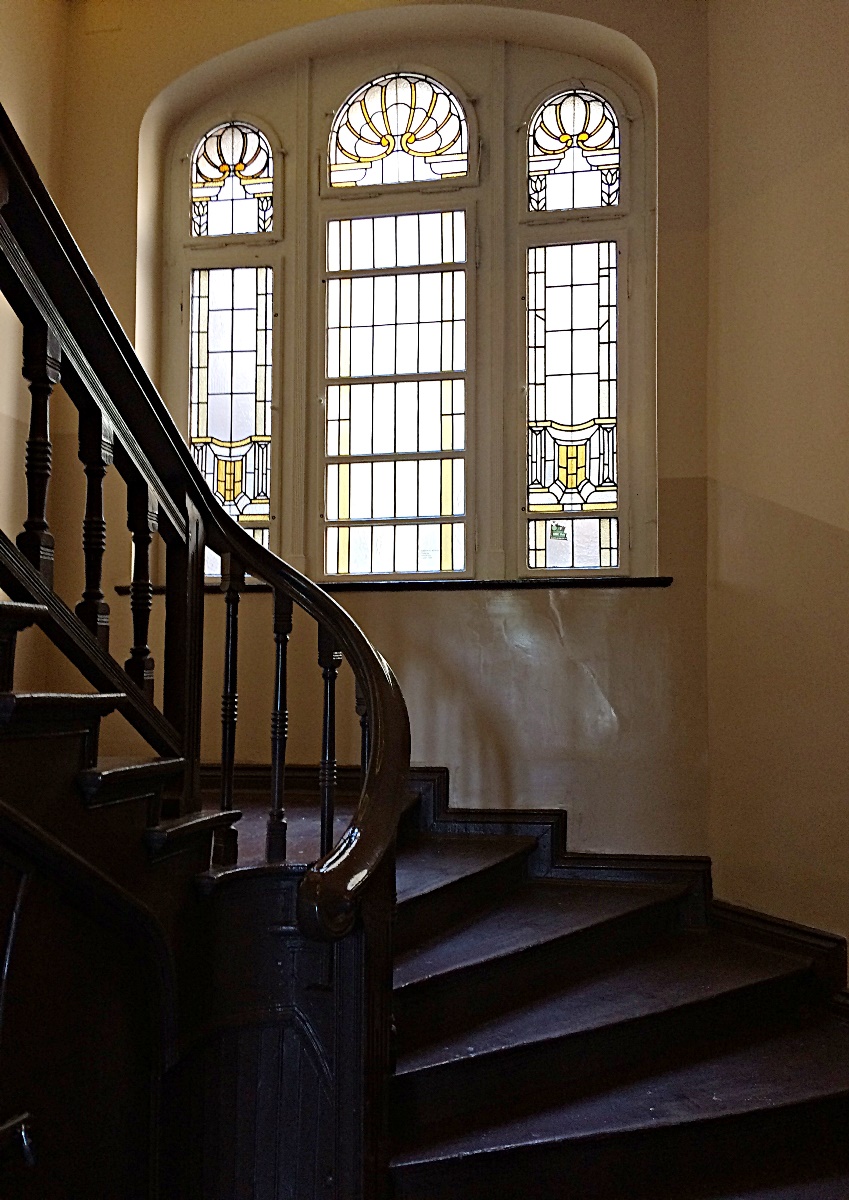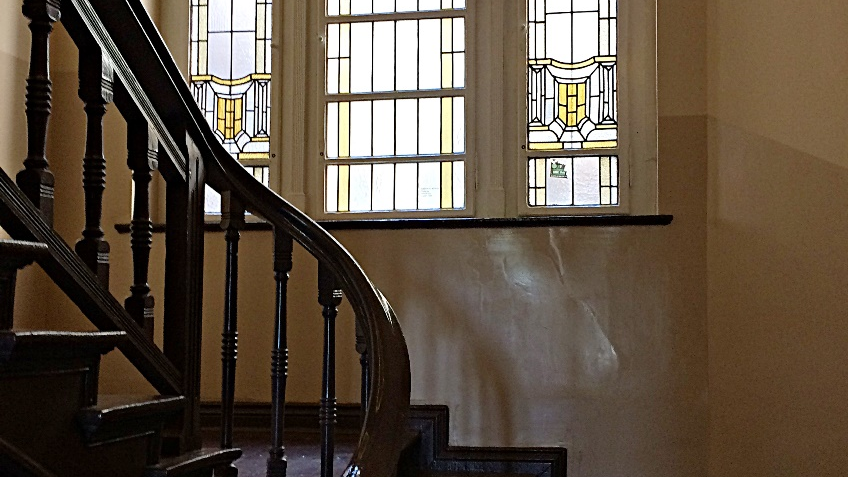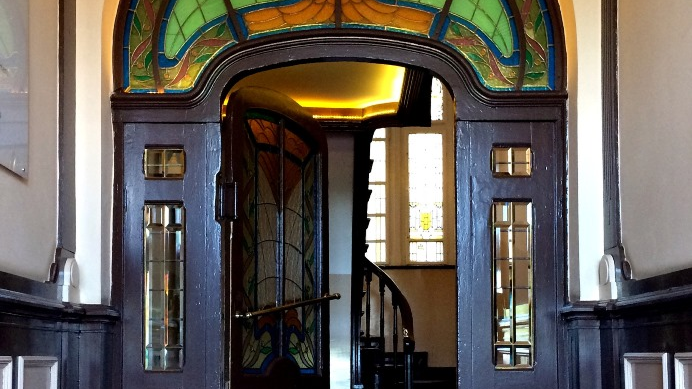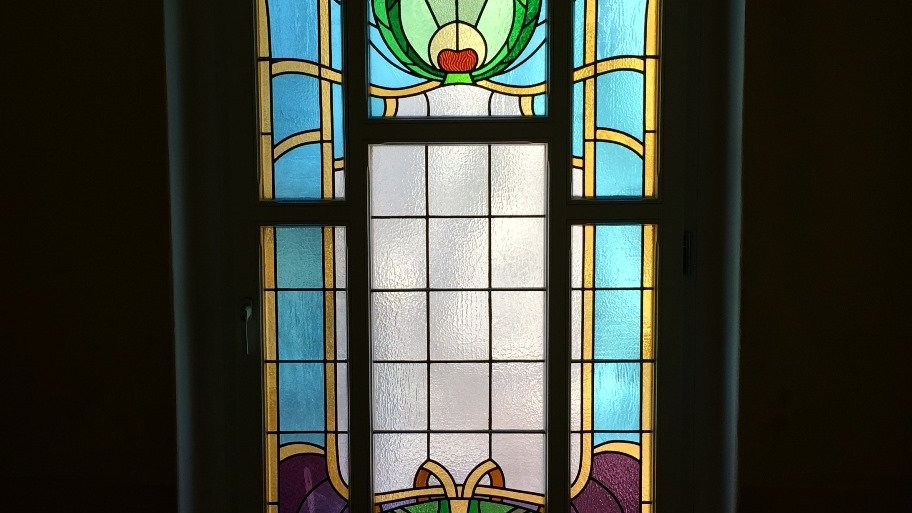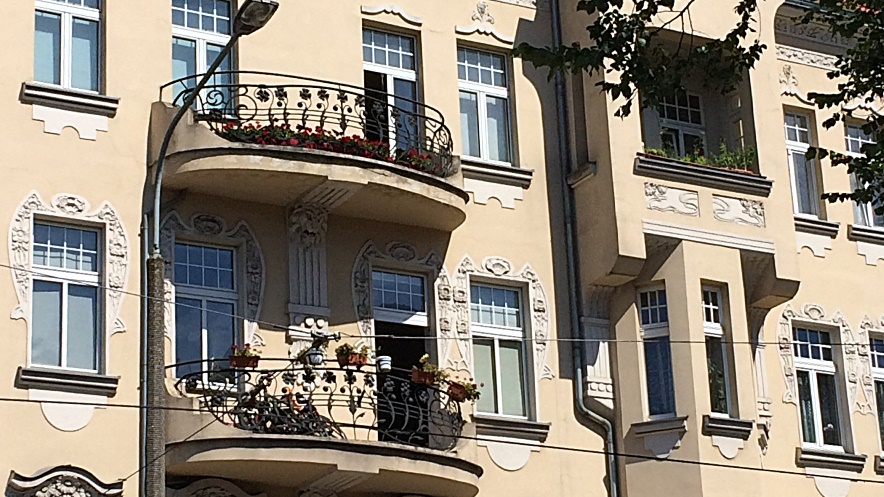While the late 19th and early 20th centuries were a time of rapid development of new artistic trends, including Art Nouveau, also referred to as Jugendstil and stile liberty, it was also a period of swift expansion of many cities, including Poznań, which at the time was recovering from the flood of 1888. The need to repair the damage and modify urban architecture fuelled the spread of the style with such defining characteristics as floral motifs, fluid lines, abundant adornments and asymmetry. Another distinctive feature of the trend was the artistic freedom summarised in the phrase: "To every age its art, to art its freedom" inscribed on a building of the Vienna-based representatives of the movement.
Note that the Poznań variety of Art Nouveau differs from that advocated by such artists as the Belgian designer Victor Horta and the French architect Hector Guimard. Similarly to Wrocław, Poznań was influenced by Berlin and embraced the visions of Berlin artists, who were more eclectic and at times revived classical forms. Many stucco companies drew on German models, the most prominent among them being the workshops of Antoni Krzyżanowski, Max Biagini and Bolesław Richelieu. Some of the most valued architects were Oskar Hoffmann, Hermann Böhmer, Paul Preul and Paul Pitt.
While one could not possibly name all of Poznań's designers of the time, it is possible to list those associated with specific districts or streets, where they produced most of their art. The districts that saw a lot of new development included Jeżyce, Łazarz, Wilda and the old city centre. In Jeżyce, note should be taken of townhouses in the Most Teatralny (Theatre Bridge) area on ul. Roosevelta and ul. Krasińskiego as well as those found on Mickiewicza, Słowackiego, Zwierzyniecka, Dąbrowskiego, Kraszewskiego, Jackowskiego and Polna streets. In the Łazarz District, the most distinctively Art-Nouveau buildings seem to be those located on the streets of Matejki, Wyspiańskiego, Głogowska, Niegolewskich and Małeckiego. In Wilda, it is best to go to ul. Wierzbięcice. As for the old city centre, distinction is certainly deserved by ul. Święty Marcin, Garbary, Szewska, Półwiejska and Kwiatowa.
Bear in mind that Art Nouveau is more about adornments than building structure, ornaments being placed within as well as outside, with much attention given to the symbolism of details. The interiors of the townhouses that line the above streets contain examples of elaborate ornamentation in vestibules and stairwells, in the form of Art-Nouveau stained-glass, railings, chandeliers, sculptures and tiles. No wonder they continue to inspire Poznanians and are discussed in various publications, including "Secesja w Poznaniu" ("Art Nouveau in Poznań") and "Secesyjne domy przy ulicy Roosevelta" ("Art Nouveau buildings on Roosevelta Street"). All of the places they highlight have a long history and a unique approach that is worth noticing, at least during a virtual walk.
Aleksandra Białek
© Wydawnictwo Miejskie Posnania 2018


